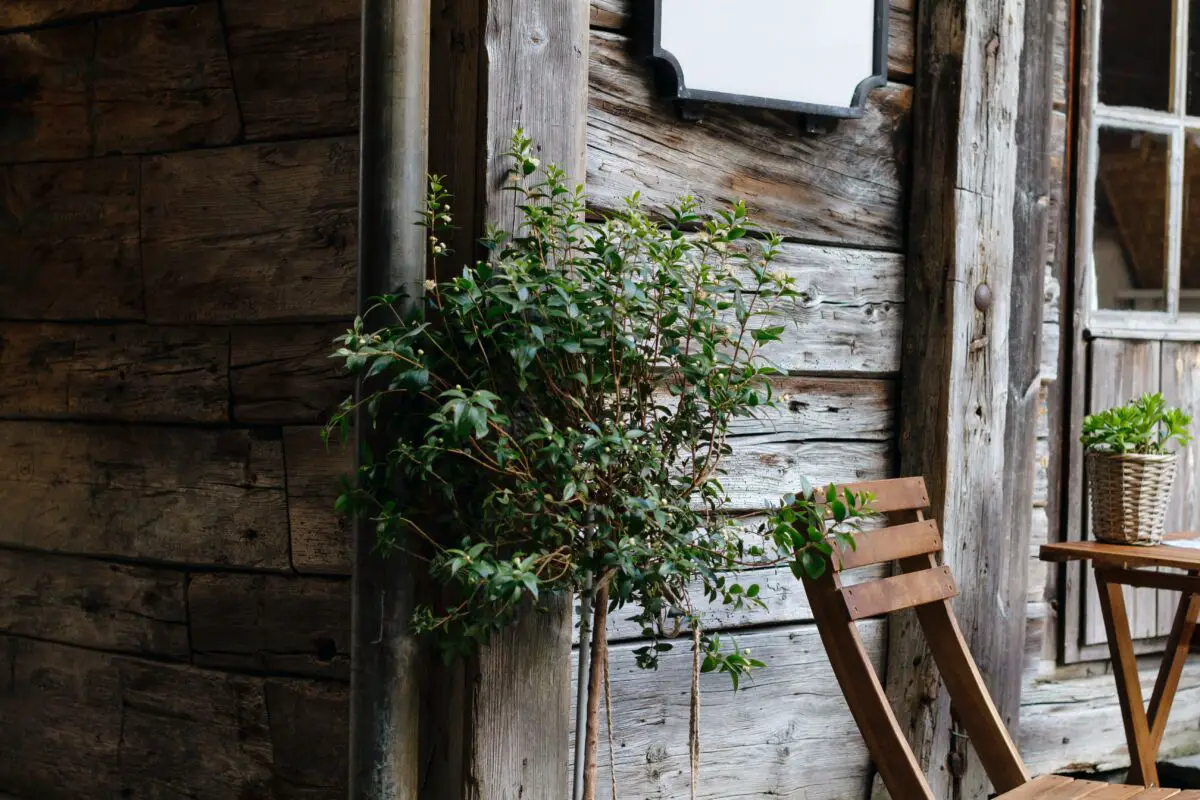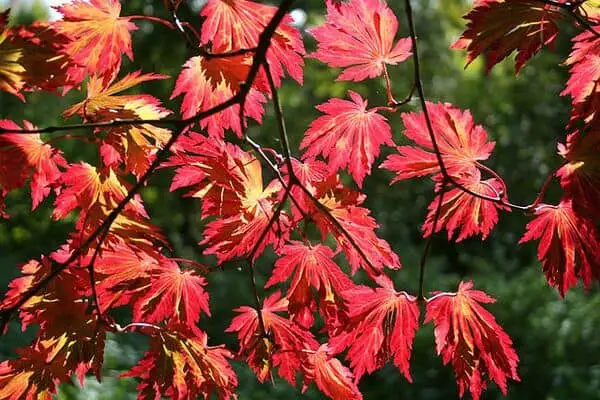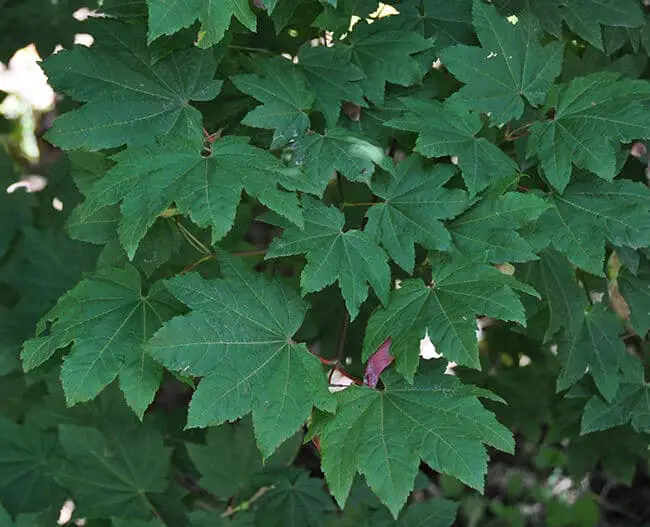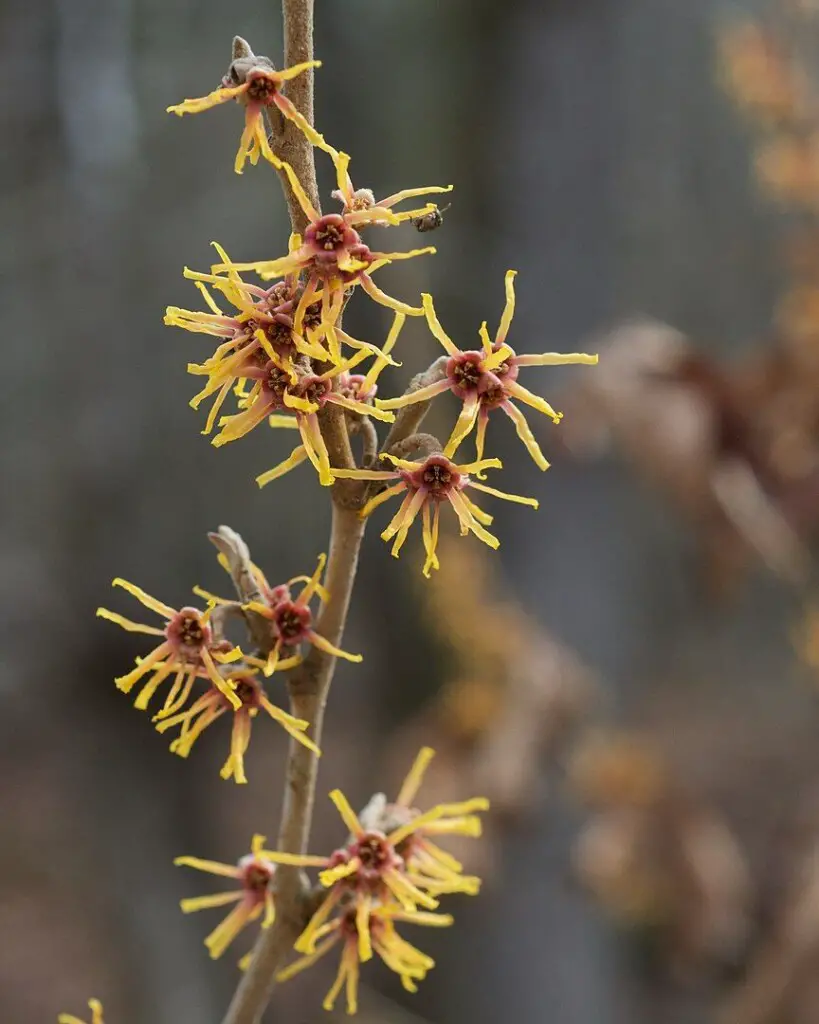If you have a small balcony, you likely have only a few square feet of space available for a patio set and to move around. The vertical space may also be limited if there’s another balcony right above. That means your choice of tree to place on the balcony will be significantly limited.
The best trees for a small balcony would have to be short enough to extend no further than your ceiling. And they should take up as little horizontal space as possible. Such trees should also be easy to prune in order to keep the height and width within reasonable dimensions.
Here are the nine best trees that have just the right features and dimensions for a small balcony.
Fernleaf Fullmoon Maple
Although the fernleaf fullmoon maple matures to a height of 20 to 30 feet (6-9 meters), you can grow it as a small tree. You can prune it to keep it small for your balcony.
What makes it special is the dense foliage consisting of medium-green, deeply lobed leaves. Just one tree can make your balcony feel like a lush garden. And it gets more interesting in fall when the color changes to brilliant red, orange-yellow, or red-orange.
The fullmoon maple is native to Japan; therefore, it’s not heat-tolerant. It’s well suited for temperate climate regions. This variety – Acer japonicum – is closely related to the Japanese maple Acer palmatum.
Acer Circinatum “Monroe” (Cutleaf Vine Maple)
What makes the cutleaf vine maple well suited to your balcony is that it grows much lower with a wider spreading habit compared to other vine maples.
The tree has a beautiful deep, finely cut foliage that can transform your balcony. It gives your lifeless balcony a breath of life as it changes with the season from green to a pale yellow in the fall.
Best of all, it is pest and disease tolerant, making it easier to grow and maintain. However, the vine maple is often grafted onto Japanese maple, which means it won’t be drought-tolerant.
Fortunately, it tolerates varied soil types and grows best in dappled or even full shade. That’s certainly a good thing for those balconies that don’t receive much sunlight. And it only needs occasional watering in the summer.
Since it has a slow growth, it may be better to purchase a mature tree than growing it from a seedling.
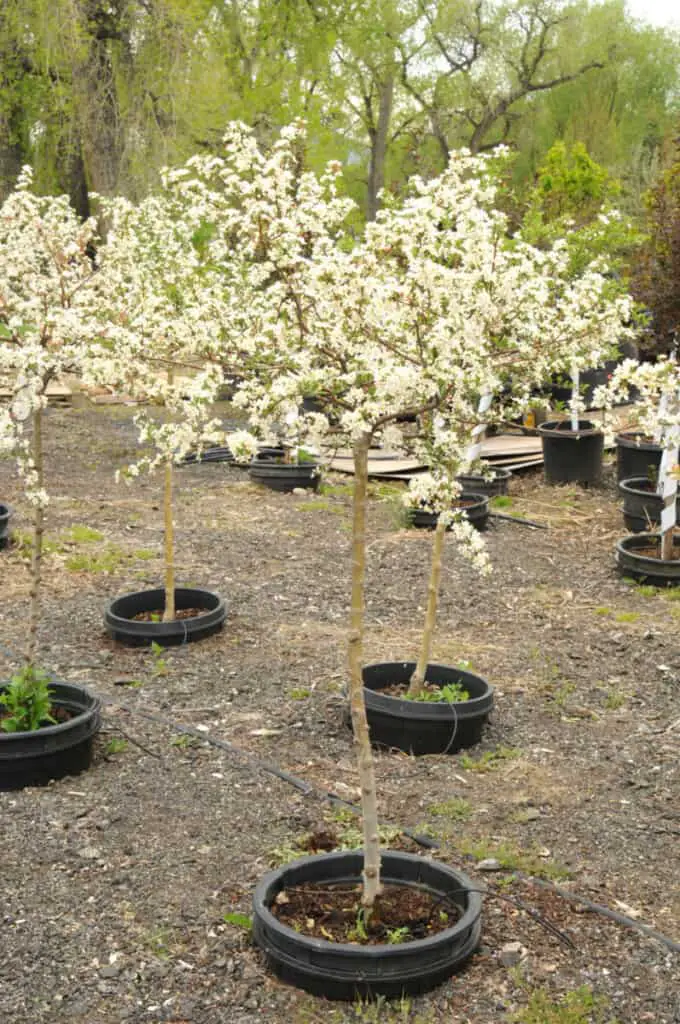
Malus Toringo Ssp. Sargentii “Tina” (Dwarf Sargent’s Crabapple)
The dwarf Sargent’s crabapple is perfectly tiny for those small balcony spaces. It grows to a rounded shape instead of extending vertically.
Its vibrant early spring color is one more reason why you would enjoy having it on your balcony. The reddish-pink buds open up, revealing pure snow-white flowers. Besides that, you’ll also enjoy the fresh, light fragrance of this tree, which can replace the artificial scents you probably use.
Since it’s disease-resistant, you shouldn’t have too much trouble growing it.
An added plus is that the marble-size red crab apples appearing in late summer and early fall will pull in a host of beautiful birds.
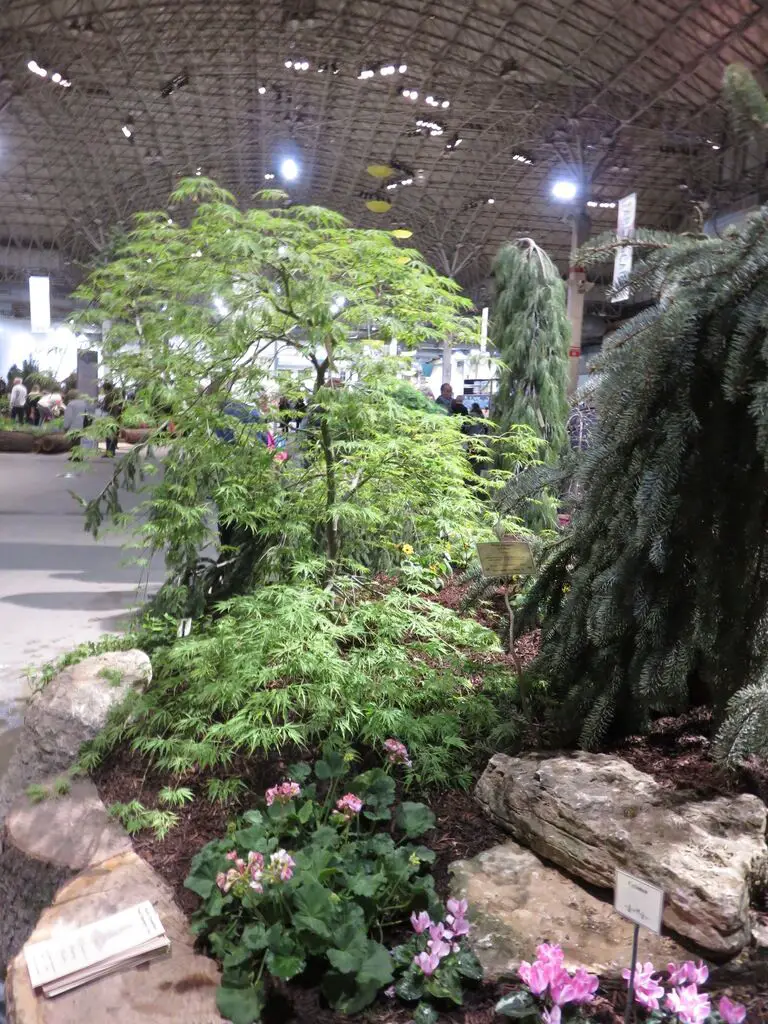
Acer Palmatum “Germaine’s Gyration” Japanese Maple
The “Germaine’s Gyration” Japanese maple grows to a height of 6-8 feet (1.8-2.4 meters), making it convenient to prune to the right height for your balcony. It actually spreads out horizontally more than it grows vertically.
In the fall, get ready to be mesmerized by the yellow-orange leaves.
The cultivar does well on slightly acidic soils. Remember that as you prepare your potting mix. Also, ensure the soil is well-drained.
If you live in the St. Louis area, this may be an excellent choice for you.
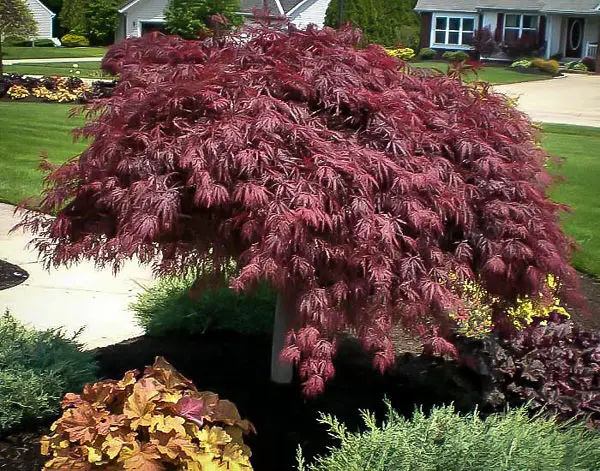
Acer Palmatum Var. Dissectum “Crimson Queen” Cutleaf Japanese Maple
The “Crimson Queen” cutleaf Japanese maple is another great balcony tree since it’s smaller than other straight species. It reaches a maximum height of 8-10 feet (2.4-3 meters) with a rounded, shrubby form.
The cascading branches give it an artistic look. That’s further complemented by the color change of the leaves from purple most of the year to red in fall.
It does quite well as a specimen tree, making it the focus of attention on your balcony.
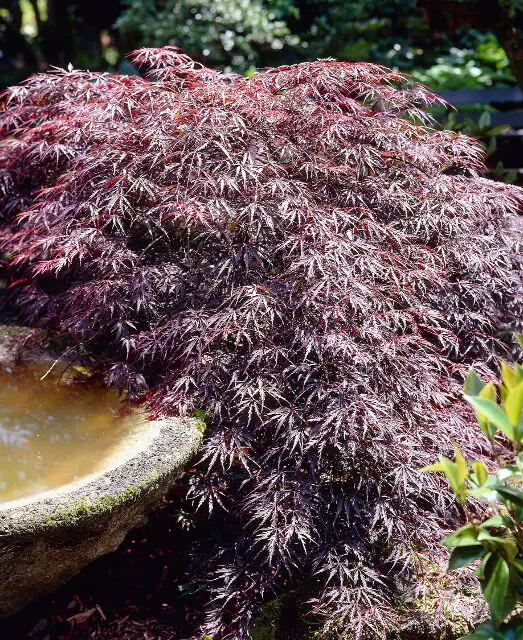
Acer Palmatum Var. Dissectum “Tamukeyama” Cutleaf Japanese Maple
Just like the “Crimson Queen” cutleaf Japanese maple, the “Tamukeyama” cutleaf Japanese maple features artistic cascading branches. It’s also purple like the “Crimson Queen” and turns red in fall.
This tree would work well as an accent tree to complete the look of your balcony. It typically fits in sun-dappled areas, serving as a less prominent understory plant.
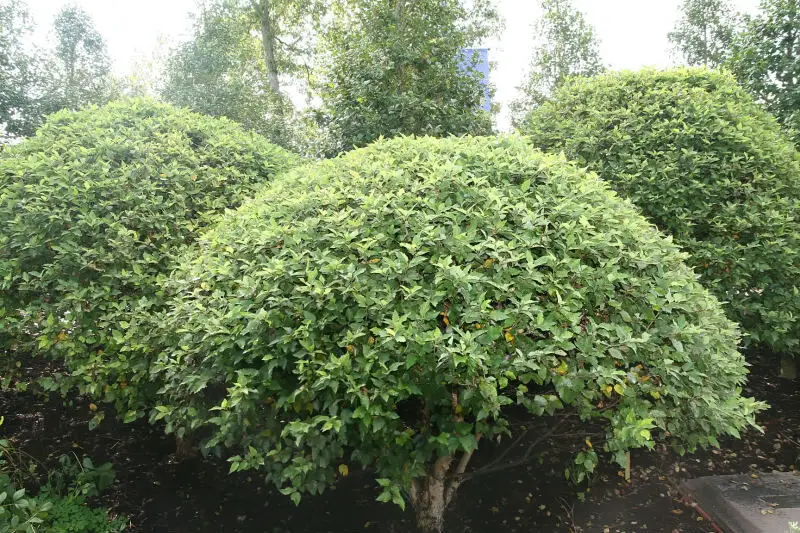
Betula Nigra – River Birch – “Little King”
This “Little King” cultivar is multi-stemmed, which makes it spread out in a rounded shape.
You can identify it from its orangish to brownish exfoliating bark. Its attraction is based more on its leaves and branches than the less significant flowers. You can expect the leaves to stay healthy for long since the tree is resistant to leaf spot disease.
Pests may not be an issue either because the cultivar is resistant to the bronze birch borer. No wonder it works well as a specimen tree.
Make sure to grow it in acidic soils and keep the soil wet.
Hamamelis Vernalis – Ozark Witch Hazel
The Ozark witch hazel grows to a height of 6-10 feet (1.8-3 meters) with a maximum spread of 8-15 feet (2.4-4.5 meters). That shows the tree’s tendency to spread horizontally more than vertically. This is certainly a key characteristic of a great choice of tree for a small balcony.
To get the best growth, make sure to have consistent moisture in the soil. That’s particularly crucial during the early growth stages. The soils should also be acidic.
This tree produces some of the most striking flowers. It has yellowish-red blossoms with crinkled and ribbon-like petals. These flowers grow in clusters between mid and late winter seasons.
With such a tree, you may not need to plant flowers. It serves the purpose of both trees and flowers.
A good practice when cultivating the tree is to remove the root suckers. That will prevent new growth, which can compete for the limited nutrients in the soil.
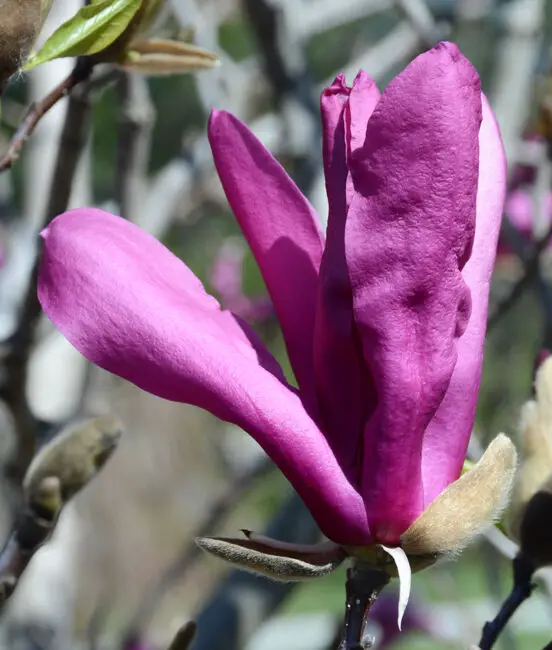
Magnolia (Little Girl Series)
The magnolia Little Girl Series is different from the saucer magnolia (Magnolia soulangeana) or the star magnolia (Magnolia stellata). This hybrid of magnolias flowers 2-4 weeks later than those other two varieties.
The fact that the flowers blossom late reduces the risk of damage from late spring frosts.
Another benefit of cultivars in this series is the fact that they grow in a wider range of soil types compared to other trees. They’ll do well in slightly acidic soils all the way to neutral soils, as long as the soil is well-drained.
The tree can even tolerate clay soils.
Moreover, flowers in this tree can grow in both full sun and part shade.
The cultivars are great as specimen trees or shrub borders. Some of them include the following:
- Magnolia “Ann” – A compact shrubby tree with late-blooming, slightly fragrant purple-red flowers.
- Magnolia “Betty” – The leaves have copper-red tints in spring, which turns dark green in late spring.
- Magnolia “Jane” – A slow-growing small shrubby tree with large reddish-purple flowers that bloom between mid-April and early May.
- Magnolia “Randy” – Has a narrow open habit with reddish-purple flowers blossoming between mid-April and early May.
- Magnolia “Ricki” – A compact shrubby tree with reddish-purple blooms between mid-April and early May.
- Magnolia “Jane Platt” – features show-stopping spring flowers with delicate feather-like petals. It rarely goes beyond 3 meters (9.8 feet) in height by 3 meters width.
Conclusion
Using this list of trees, you can select one or more that perfectly fit in your small balcony.
It’s not just the characteristics of the tree that matter, but also your specific needs. Therefore, consider what you value most and evaluate the trees that best suit you.

